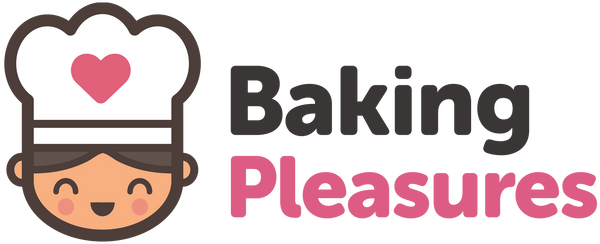Cake decorating is a fun and rewarding way to add a personal touch to your baked creations. Whether you’re a complete beginner or someone looking to improve their skills, learning the basics of cake decorating is an exciting journey.
With the right tools, techniques, and a bit of practice, you can transform a simple cake into a stunning centerpiece for any occasion. This guide will walk you through the essentials of getting started in cake decorating.
Why Learn Cake Decorating?
Decorating cakes allows you to express your creativity and make celebrations extra special. Whether you’re crafting a birthday cake, a wedding centerpiece, or a simple dessert for a dinner party, decorating transforms your cake into something memorable. Plus, it’s a skill that grows with practice—each cake is an opportunity to learn and improve.
Essential Tools for Beginner Cake Decorators
Starting with the right tools makes all the difference. Here are the must-haves for every beginner:
Turntable
A cake turntable is a game-changer for smooth frosting and even decorations. It allows you to rotate your cake while applying icing or piping designs, making the process much easier and more precise.
Cranked Spatula
This angled spatula is perfect for spreading frosting evenly across the cake and smoothing the edges.
Piping Bags and Tips
Invest in disposable piping bags and a variety of piping tips to create different designs like rosettes, borders, and lettering. Start with a basic set that includes round, star, and petal tips.
Cake Smoothers and Scrapers
This tool is essential for achieving smooth sides and sharp edges on your cake. It’s also great for leveling frosting layers.
Cake Leveler or Serrated Knife
Leveling your cake layers ensures stability and an even surface for decorating. A cake leveler or serrated knife will help you achieve clean cuts.
Edible Decorations
Stock up on edible toppers such as sprinkles, edible glitter, and edible cake toppers for quick and easy embellishments.
Gel Food Coloring
Unlike liquid food coloring, gel food coloring is concentrated and won’t alter the consistency of your frosting or batter. Use it to create vibrant hues for buttercream, fondant, or decorations.
Fondant Smoother
If you’re working with fondant, a fondant smoother helps create a polished finish and eliminates air bubbles.
Acetate Sheets
These are useful for creating chocolate decorations or achieving smooth sides on cakes with ganache or frosting.
Basic Techniques for Beginners
Once you’ve gathered your tools, it’s time to practice some fundamental techniques:
Crumb Coating
A crumb coat is a thin layer of frosting that seals in crumbs, creating a smooth base for your final layer. After applying the crumb coat, chill the cake for 15–30 minutes to set it.
Smoothing Frosting
Use an offset spatula and a cake scraper to achieve smooth and even frosting. Rotate the cake turntable as you work for consistent results.
Piping Basics
Practice simple piping techniques, such as swirls, stars, and shells, using a round or star tip. Start on parchment paper before moving to your cake.
Fondant Application
Roll out fondant evenly and drape it over your cake. Use a fondant smoother to eliminate creases and air bubbles.
Decorative Accents
Add dimension with edible decorations like sprinkles, sugar flowers, or chocolate shapes made using acetate sheets. You can also dust luster dust for a shimmering finish.
Beginner-Friendly Cake Decorating Projects
Classic Birthday Cake
Start with a simple two-layer cake. Frost it with a smooth layer of buttercream, add piped borders, and finish with colorful sprinkles or a custom edible topper.
Cupcake Bouquet
Practice piping buttercream flowers on cupcakes. Arrange them in a bouquet-style display for an impressive yet beginner-friendly project.
Drip Cake
Drip cakes are trendy and surprisingly easy. Use a ganache tinted with gel food coloring or a bottle of chocolate drip and carefully drip it down the edges of your frosted cake.
Troubleshooting Common Cake Decorating Challenges
Uneven Frosting
If your frosting is uneven, warm your spatula slightly to smooth out the surface. A turntable also helps maintain consistency.
Cracked Fondant
Knead fondant thoroughly before rolling it out to prevent cracks. If cracks appear, smooth them with a bit of shortening or water.
Piping Mistakes
If your piping design doesn’t turn out as planned, scrape it off gently and start again. Practicing on baking paper beforehand can help build confidence.
Tips for Success in Cake Decorating
Start Simple
Begin with basic designs and gradually take on more complex projects as you gain confidence.
Plan Your Design
Sketch your ideas or gather inspiration from cake-decorating books and websites. This ensures a cohesive look and saves time.
Practice Makes Perfect
Don’t get discouraged if your first few attempts aren’t perfect. Cake decorating is a skill that improves with practice.
Use High-Quality Ingredients
From buttercream to fondant, quality ingredients make a big difference in taste and appearance.
Have Fun
Cake decorating is meant to be enjoyable. Celebrate your progress, and remember that even imperfect cakes are delicious!
Final Thoughts: Your Cake Decorating Journey Starts Here
Cake decorating is a skill that combines artistry and baking. By starting with the basics, practicing consistently, and letting your creativity shine, you’ll soon be creating cakes that look as incredible as they taste. So gather your tools, pick a design, and dive into the world of cake decorating—you’ve got this!

